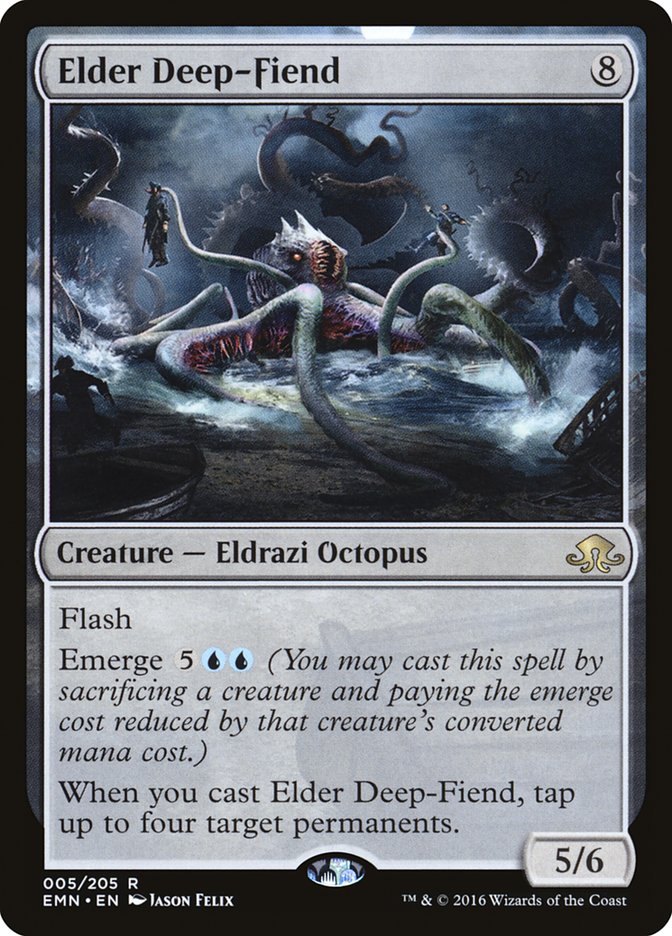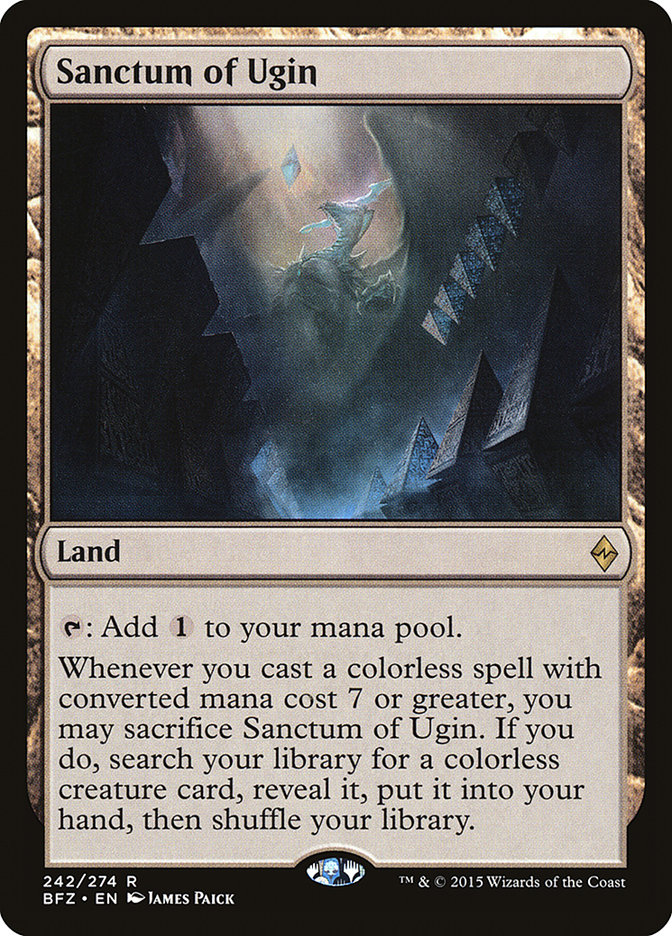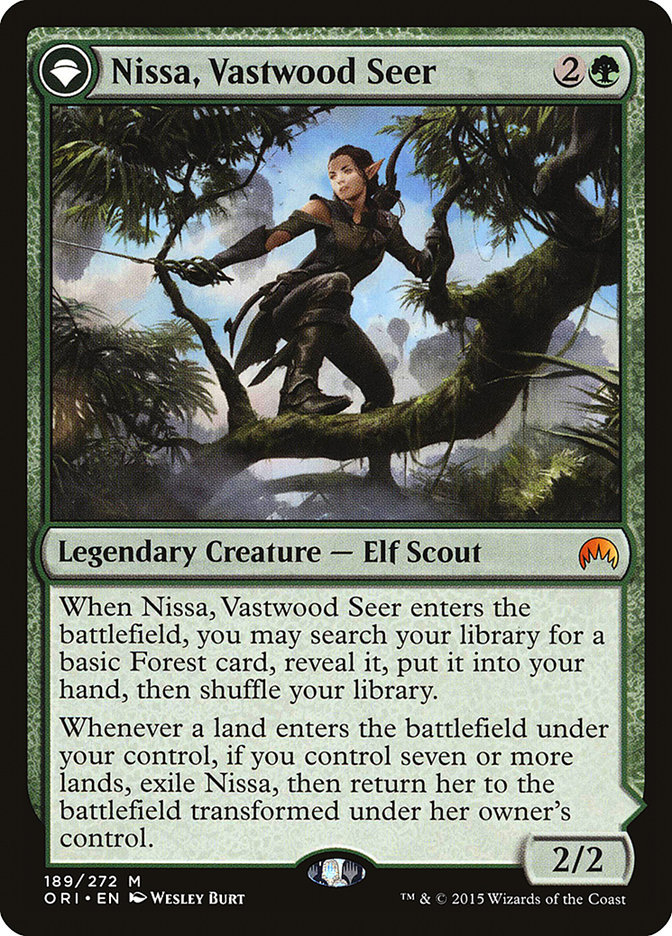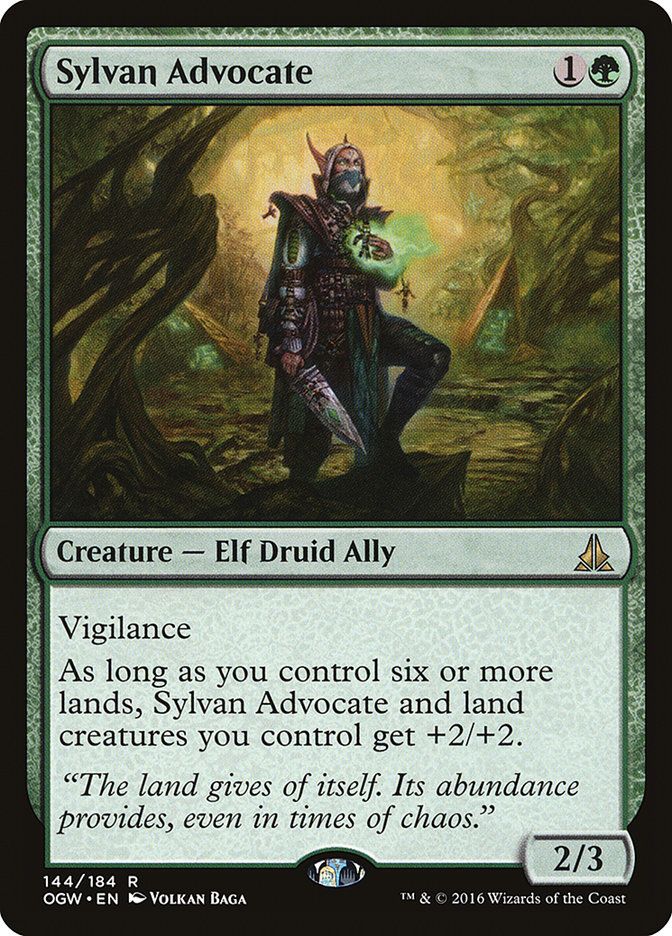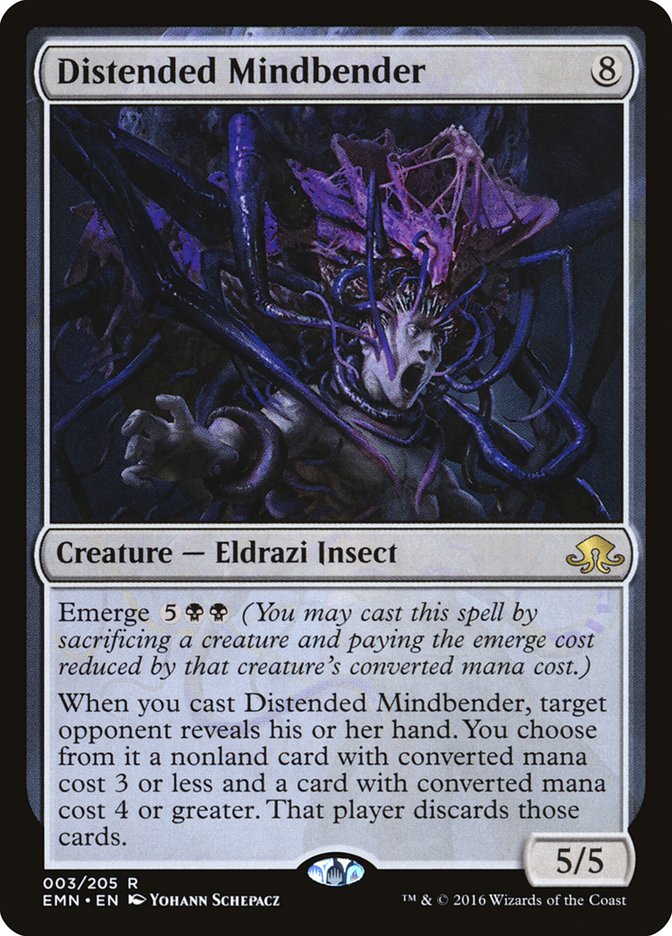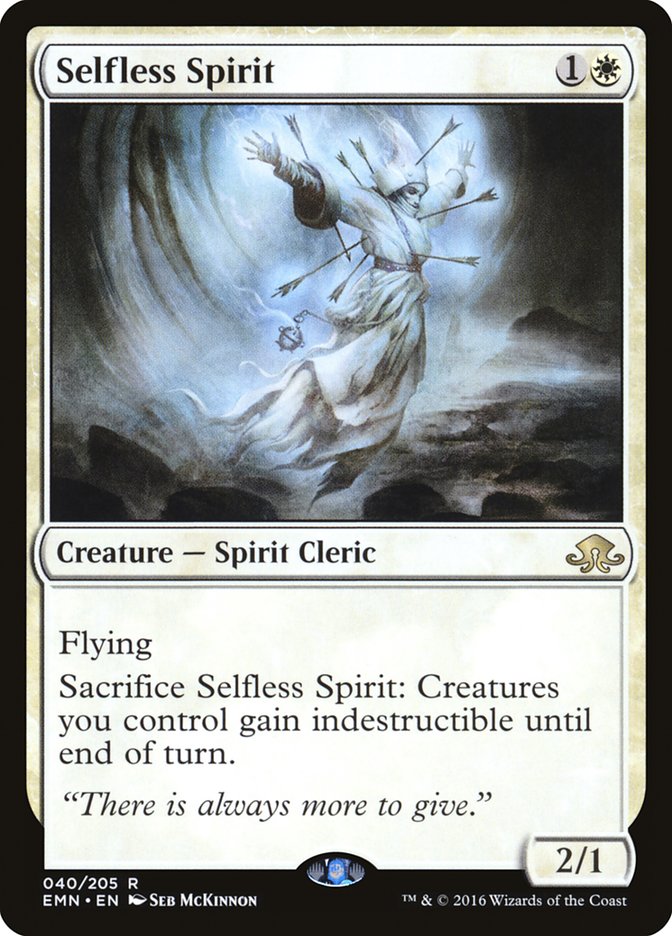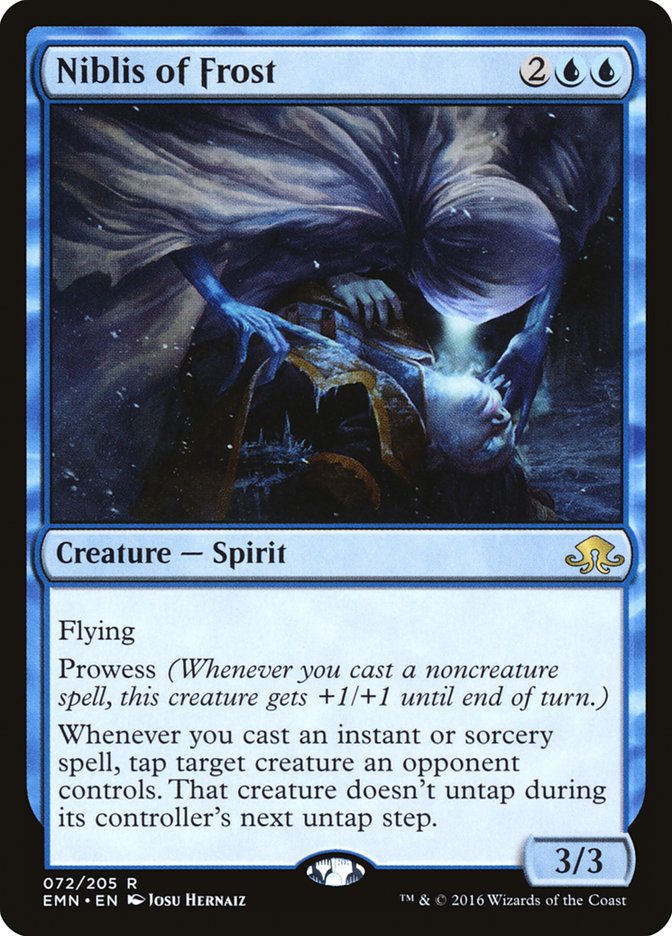I know it’s early, but I think we have a winner.
Cost reduction is inherently busted, but there’s also more to it than that.
Realistically, we want to sacrifice a three-drop for value, and there are plenty of good options for that.
And that’s just the beginning of the list.
The ideal sequence for Elder Deep-Fiend is:
Turn 2: Whatever, who cares.
Turn 3: Sacrifice fodder.
Turn 4: Elder Deep-Fiend, sacrifice Sanctum of Ugin, get Thought-Knot Seer or Reality Smasher
Thought-Knot Seer tends to work better since it’s on-curve, but if you have an Eldrazi Scion lying around or hit a land off Matter Reshaper, Reality Smasher could be the better choice. There are very few instant-speed removal spells that hit a colorless 5/6, so you typically get a Time Walk and a huge attack.
If you want, you can also search up another Elder Deep-Fiend and emerge the first copy if you just need another Time Walk. The emerge cards themselves are great, but Sanctum of Ugin (and Kozilek’s Return if you want it) puts them over the top.
There’s also the Mistbind Clique issue where people are going to assume, once you don’t cast Elder Deep-Fiend on their upkeep, that you don’t have it. They’ll attack before playing spells, getting their lands tapped and their best creature eaten.
Elder Deep-Fiend is a huge flash threat that creates an enormous tempo swing. This is what I’m working on:
Creatures (34)
- 4 Elvish Visionary
- 2 Nissa, Vastwood Seer
- 4 Eldrazi Skyspawner
- 4 Reality Smasher
- 3 Sylvan Advocate
- 1 Thought-Knot Seer
- 4 Matter Reshaper
- 4 Duskwatch Recruiter
- 4 Loam Dryad
- 4 Elder Deep-Fiend
Lands (23)
Spells (3)
Sideboard

There’s also the option of removing the Loam Dryads and Cryptolith Rites for higher card quality, either with Bounding Krasis or splashing for Reflector Mage and Spell Queller. I wanted to be explosive and aggressive, plus I really like having Crytolith Rite plus Duskwatch Recruiter when you have cheap, powerful things to find. Instead of having a higher consistent card quality, I have an end-game that can trump most people.
Nissa, Vastwood Seer is reasonable sacrifice fodder. You want to play a low land count and some colorless lands, so the mana can get sketchy. She helps find a fourth land and hopefully Loam Dryad or Cryptolith Rite are assisting with Elder Deep-Fiend’s UU emerge cost. You might not transform her as often as you would in a normal deck, thanks to Sanctum of Ugin being sacrificed as soon as possible, but that’s not really what she’s there for.
Sylvan Advocate may seem out of place for the same reason, but it’s still a powerful card, and games against control decks can go long enough to power it up and put it out of Languish range.
This deck is similar to what the Cryptolith Rite decks looked like before G/W Tokens actually took over the format, except with Elder Deep-Fiend instead of Collected Company. Is it odd that Elder Deep-Fiend might end up replacing Collected Company? Both are doing very similar things (and want to go in similar shells), but you always know what you’re going to get with Elder Deep-Fiend, and it’s always going to be great. Collected Company, especially in decks with Loam Dryad and the like, is often under-powered.
You want to maximize your chances of hitting a pair of three-drops with Collected Company, which is what makes it so powerful, but there’s basically no reason to take that risk anymore when you could always have a nutty 5/6. However, it’s worth noting the my G/U deck could replace some of the Cryptolith Rite shenanigans with Collected Company and play Elder Deep-Fiend in the slot you typically see Dromoka’s Command. I’ve even considered sideboarding them in my G/U deck.
The downside happens once people start focusing on playing removal spells that interact favorably with Matter Reshaper and aggressively attacking them so you don’t have sacrifice fodder, at least in the early-game. That mostly just delays the inevitable, though. They can certainly strand the emerge cards in your hand, but it should be unlikely, considering the density of sacrifice fodder to emerge creatures in your decks.
Building decks with emerge has been a lot of fun so far.
While it might seem like you want to play Elder Deep-Fiend (and its friends) alongside a pile of creatures, that doesn’t actually seem necessary (unless everyone starts Silkwrapping your three-drop). You can still be somewhat creature-light and still operate efficiently.
How many emerge creatures is the correct number to play? Or rather, how many can you get away with playing? Drawing an opener of uncastable spells certainly isn’t ideal, but you definitely want to have access to at least one emerge creature per game. Wretched Gryff and Lashweed Lurker aren’t bad cards by any means!
If you’re playing Kozilek’s Return, I think the answer is as high as eight.
Creatures (21)
- 2 Pilgrim's Eye
- 2 Jace, Vryn's Prodigy
- 4 Eldrazi Skyspawner
- 1 Reality Smasher
- 1 Thought-Knot Seer
- 4 Matter Reshaper
- 3 Wretched Gryff
- 4 Elder Deep-Fiend
Lands (25)
Spells (14)

You could ditch Tormenting Voice for more Jace, Vryn’s Prodigy, which would enable you to play Corrupted Crossroads and Yavimaya Coast for something like Lashweed Lurker or a surprise Void Grafter if you wanted. After playing some games, it was clear that this deck wanted cheap ways to discard Kozilek’s Return against Bant Humans because casting it often did very little and you couldn’t spend the time doing so.
I think this deck has promise, especially once you figure out that you don’t need or want two-mana creatures (that aren’t Jace).
So yeah, I’m likely playing Elder Deep-Fiend at #SCGCOL. G/U is the frontrunner for sure, but I wouldn’t be surprised if there’s a spicier list out there with Spell Queller and Reflector Mage or a Mono-Blue list with Kozilek’s Return. There are certainly some issues with the G/U deck, such as Sanctum of Ugin not playing very well with Sylvan Advocate (and Nissa, Vastwood Seer to a certain extent), but I think that’s okay. Either way, I’m going to keep working on it.
Maybe I’ll break it for Week 1.
Distended Mindbender is also great, but more difficult to figure out, at least for me.
The same rules apply, except this time, you’re playing a grindier game instead of a tempo game. Once you shred your opponent’s hand and make a 5/5, you’ll want to close the game as quickly as possible, lest you risk your opponent drawing out of it.
A cursory glance at the Standard-legal cards reveals very few mainstream things that incidentally line up against Elder Deep-Fiend, but Distended Mindbender is excellent in the emerge mirror match, at least if you’re on the play. If you’re on the draw, maybe Transgress the Mind is where you want to be.
One of the best things about Distended Mindbender is how it protects itself from removal because its discard ability is a cast trigger. While opponents might be able to Stasis Snare your Elder Deep-Fiend to maintain parity, they’ll have no such luck against Distended Mindbender.
There are some draws where you won’t be able to nab two cards (or, as is the case against W/R Humans, you’ll only ever get one card), but Inquisition of Kozilek on a 5/5 is going to protect itself a bit. On turn 4, it’s likely the biggest thing on the battlefield as well.
Here’s a (rough) shell:
Creatures (21)
- 2 Nissa, Vastwood Seer
- 4 Catacomb Sifter
- 1 Reality Smasher
- 1 Thought-Knot Seer
- 4 Matter Reshaper
- 1 Emrakul, the Promised End
- 4 Distended Mindbender
- 4 Grim Flayer
Planeswalkers (4)
Lands (24)
Spells (11)

This deck is not very delirium-centric, but it could be. The issue is that the payoff cards aren’t quite there. Mindwrack Demon is a possibility, although any four-mana creature without an enters-the-battlefield trigger that affects the battlefield is truly horrendous in a field full of Reflector Mages. Grim Flayer is a card that interests me because it scales well and spirals out of control once you actually connect with it. Once you start Impulse-ing (or Index-ing, whatever), it’s even more likely that you’ll be able to connect on the following turn.
Oh, Sylvan Advocate is the great stopper of various 2/2s? Well, have you read Liliana, the Last Hope? Liliana isn’t busted, but when she comes down early, she controls combat in your favor, which is incredibly important in this Standard format. If the battlefield is stalled, you can start using her -2 ability. She scales incredibly well also.
Similarly to the U/R deck, I’m not playing many two-drops. Delirium constricts the amount of each card type you want to play, which makes me want to play fewer creatures, but I’m fine with that. If my early-game mostly consists of me killing their stuff, that’s all right by me. Duskwatch Recruiter and Sylvan Advocate wouldn’t be out of place, but the three-drops interact with emerge better.
There’s even the top end with Emrakul, the Promised End, which gives you inevitability against many decks. The best we can currently do is reduce Emrakul’s casting cost to eight, which might not be good enough. Oath of Nissa could make its way into the deck, but I wanted to be base black for Liliana (although Oath helps with that), Grasp of Darkness, Ruinous Path, and Languish in the sideboard. If Ultimate Price weren’t so poor against Eldrazi, I’d happily be base green.
Past that, do we even bother playing any artifacts?
I haven’t gotten to play with any B/G decks yet, so this deck is a little rough, but they’re next on my list. Regardless, I’ve heard great things about Distended Mindbender from the people who have actually cast the card, so I know what I want to build around.
The last things I want to touch on are the various Spirits.
While individually these cards might not make a deck, together you finally have enough powerful cards for a playable deck with arguably too many options.
Creatures (19)
Lands (24)
Spells (17)
- 2 Ojutai's Command
- 3 Clash of Wills
- 2 Declaration in Stone
- 4 Essence Flux
- 2 Unsubstantiate
- 4 Take Inventory
Sideboard

Spell Queller seems like a messed-up card.
Once that card got spoiled, I quickly added the fourth Essence Flux.
Selfless Spirit might not be protecting your go-wide strategy, but I still find it valuable as an early beater that will protect your Niblis of Frost or Spell Queller from most things. This deck is probably interested in the additional two-drop, so maybe the fourth copy is worth it, but it felt like a card I only wanted to draw once per game.
Take Inventory isn’t something I’m excited about, but after some games, it was clear the deck desperately wanted a cheap cantrip for Niblis of Frost. Sorcery speed isn’t ideal, but being cheap is, and it has a higher ceiling than something like Slip Through Space.
Tempo is one of the best ways to win games in Standard, and this deck has that in spades. The evasion certainly helps as well.
***
Are Zombies a thing with Dark Salvation and Cryptbreaker? What about a Big Red deck with Mirrorwing Dragon (powering Draconic Roar), Hanweir Garrison, Incendiary Flow, and Collective Defiance? Maybe Nahiri’s Wrath powers up the various Pyromancer’s Goggles decks. Tamiyo, Field Researcher is great too!
This is, by far, one of the most powerful sets of all time.


